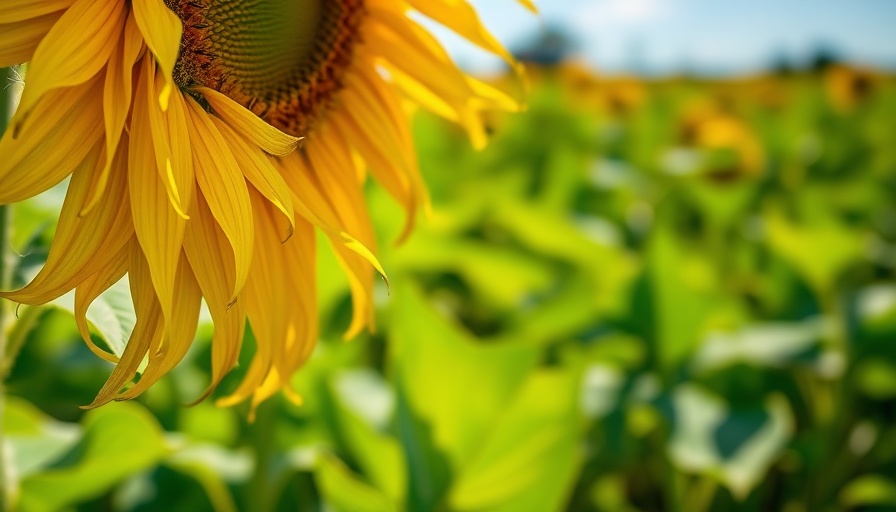
Understanding Sunflower Behavior: Why Do They Droop?
Sunflowers are more than just pretty faces in the garden; they are fascinating organisms exhibiting remarkable behavior as they turn toward the sun throughout the day, a phenomenon known as heliotropism. However, when these vibrant blooms begin to droop or bow down, it can spark concerns among gardeners. In this article, we’ll delve into the reasons behind drooping sunflowers and provide solutions to help revive them or prevent future sagging.
Five Common Reasons for Drooping Sunflowers
Whether your sunflowers are in the seedling stage or full bloom, several factors can contribute to their drooping posture:
- Natural Maturity: Interestingly, drooping might indicate maturity rather than decay. As sunflowers complete their life cycle, they tilt downward to release their seeds into the soil, a fascinating aspect of nature. Understanding this cycle can allow you to harvest at the right time, ensuring optimal seed collection.
- Transplant Shock: Newly planted sunflowers often display drooping due to transplant shock. This happens when the flowers are shifted from one location to another, causing temporary distress. Mitigating this shock with proper watering and avoiding rough handling during transplant can lead to better health outcomes.
- Water Deficiency: Like many plants, sunflowers require adequate hydration. If you're noticing drooping, check the soil moisture. A lack of water can cause stalks to bend outward, so consider regular watering schedules, especially during drier periods.
- Insufficient Support: Sunflowers with weak stems can struggle to stand upright, particularly taller varieties. You can prevent this by providing stakes or supports, especially in windy areas. These methods help maintain structure and aesthetics in your garden.
- Fungal Issues: Diseases such as Phoma black stem or Phomopsis stem canker can also lead to drooping. Regular inspection and the use of fungicides, as needed, can help keep these ailments at bay.
Reviving Drooping Sunflowers: Here’s How!
Now that you're aware of potential causes, let's focus on solutions. After confirming the underlying problem, you can proactively address the issue:
- Water Wisely: Always check the moisture levels of the soil before watering. On average, sunflowers need about 1-2 inches of water each week, especially during their growth phase.
- Provide Necessary Support: If your flowers are tall and drooping under their weight, stake them gently to provide support. This not only helps in maintaining their upright posture but also enhances their visual appeal.
- Inspect Regularly: Regularly check your plants for signs of disease or distress. Early intervention can make a significant difference, especially with fungal diseases.
- Rescue or Remove: In severe cases where sunflowers cannot be revived, it may be best to remove them to prevent the spread of disease to neighboring plants. Utilize compost or other organic methods for disposal.
Gardening Best Practices for Thriving Sunflowers
To ensure your garden flourishes, consider adopting these gardening hacks:
- Choose Pest-Resistant Varieties: Specific sunflower varieties have natural resistance to prevalent pests and diseases. Incorporate these into your planting strategy to eliminate unwanted surprises.
- Utilize Natural Fertilizers: Employing the best garden fertilizers, such as compost or organic matter, can boost your soil health and nourish your sunflowers without harmful chemicals.
- Experiment with Seed Starting Techniques: Whether starting from seed indoors or directly sowing outdoors, implement the best methods to optimize growth.
Taking Action to Support Drooping Sunflowers
While the thought of drooping sunflowers can initially cause distress, understanding their behavior and implementing preventive measures can turn potential problems into learning experiences. Remember, gardening is a journey filled with patience, experimentation, and discovery. Consider incorporating the suggestions provided, and see improvements in your sunflower health.
If you’re ready to dive deeper into flower gardening or need more personalized advice, explore local gardening forums or join workshops. Your blooming adventure awaits!
 Add Row
Add Row  Add
Add 




 Add Row
Add Row  Add
Add 

Write A Comment